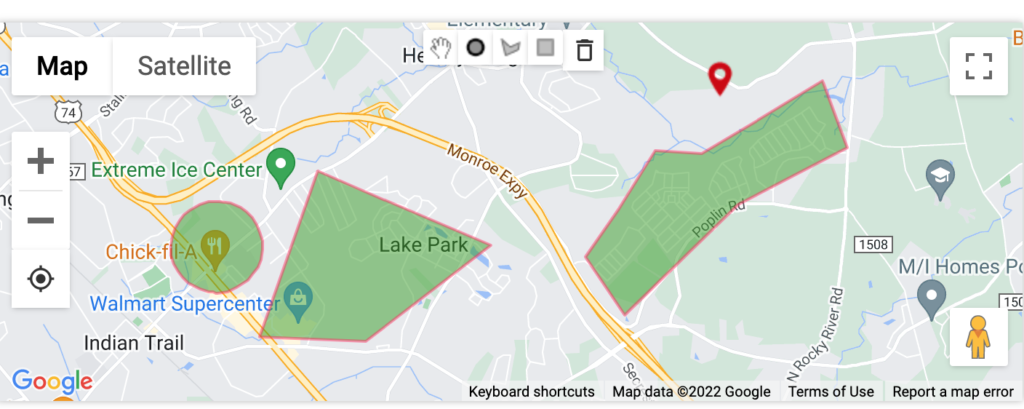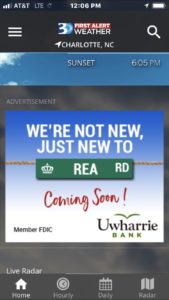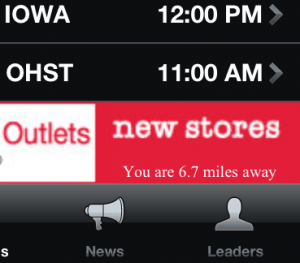Geofencing is not a new tool to some when being used in marketing and advertising applications. In fact Thumbvista ran mobile advertising campaigns using geo fencing like this one from Comic-con nearly a decade ago. That being said the overall understanding and acceptance of implementing location based targeting into overall marketing strategies is still growing industry by industry.
Information that is covered in this post –
What is Geofencing in terms of advertising?
Geofencing in terms of using geo fencing advertising /marketing is the process of creating a virtual perimeter using software to then monitor devices that go into or leave the created “fence”. Advertising software can then request ad be shown based on whether the device is within that specific area. The location data is used from a mobile devices GPS signals and this is collected while using application or sites that collective the data with the approval from the customer in its terms and conditions.
Solution providers allow marketers and advertisers to precisely choose the exact geo-location that their ads show up on. Geofencing uses different types of targeting to identify geo-location GPS coordinates using latitude and longitude, as well as IP targeting can help determine whether a device is current or previously been in the area.
What size and shape can geofences be?
Geofences can be made in radiuses or polygons. A radius is a circle around a location and this can be as low as .01 miles and as large as you would like. This type of geofencing can have an address in the middle or simply latitude, longitude by using a drop pin method. The drop pin method is commonly used when the physical address is not as close as you would like to actual center point or an outside or temporary environment such as a festival. Polygon geofencing is to draw the exact foot print of the area you would like to target. This way to can make sure not to include or exclude area by using traditional radius targeting. The final type of geofencing is addressable geofencing. Addressable geofencing uses property plot lines to target a physical address. These plot lines are typically found from property tax data.

Where are markers commonly using geofences?
Geofencing allows for relevant marketing tactics for advertisers using programmatic display ads that captures the eye and engages shoppers in their near proximity. Other popular locations that are commonly geofenced are stadiums, convention centers, shopping malls, the competition, neighborhoods of interest. Creative is very important in these campaigns since they can speak directly to the area. Studies have shown the good creative can increase ad effectiveness up 65% – per Nielsen
How many locations can be targeted?
The amount of locations you would like to target many times has no limitations. The main limitations occur with trying to optimize those locations or customize targeting features such as trying to use polygons are going to be different than using a set radius or addressable plot lines. Companies like Thumbvista can require and provide a template to help upload locations in a set way to then be able to report back.
A simple use case
For example, a home improvement store has a flower sale on Easter weekend. They decide to geofence within 3 miles from its location to target neighborhood surround location within the same general. This focuses on customers who are likely to purchase from their location and reduces waste and provides a strong return on investment. Advanced tracking can be implemented in some cases with larger campaigns by storing mobile ID who received an impressions and/or made a click they can retargeting customers and track whether that mobile ID visited a smaller geofence around their location foot print. This is called foot traffic attribution or measuring visit from ad exposure.
Examples of creative (ad design) used
The best creative speaks direct to the audience in a clear way. Be sure to tie in what makes this specific location of interest and make ads as relevant as possible. If you are trying to get customers who are near in the store then be sure to add an offer that is enticing enough to draw them in with a sense of urgency. Designing an ad with animation or rich media shows much higher click through rates than a standard static ad deigned in Jpeg or PNG. In some case nearly double.



What are the advantages?
What is the main advantages of geofencing is reducing ad wasted by being targeted geographically where is matters. Being able to be specific with your creative and speak directly to an audience that is relevant ie. geofencing competitors. The advance analytics provided such as per location reporting or in some cases foot traffic attribution and retargeting from previous geo-location. Studies show adding relevance of any kind increases over all effectiveness of an ad campaign.
How much does it cost?
This cost of using location based marketing varies based on a few factors such as amount of locations, length of time the locations are advertised to and the ultimately how many devices are “seen” within the area. Across the industry the advertisers are charged cost per thousand or CPM. For more infromation see our article here on pricing explained.
See here for more geofencing marketing case studies.
Thumbvista offers two types of options for building geofences into your mobile display advertising campaigns. These options are set up to be a good place to start for small businesses or a professional optional with all the bells and whistles for an agency or even a larger multi location corporation.
1. We manage, this is typically for larger more robust campaigns that seem complex and may required professional assistance. See our pricing options here.
2. Do it your self geofencing, this is a self-services option that allows you the flexibility to “do it yourself” and add geofences for your mobile display advertising. See our pricing here.
Contact us today for more information on how adding location data to your digital advertising campaigns can help you.

